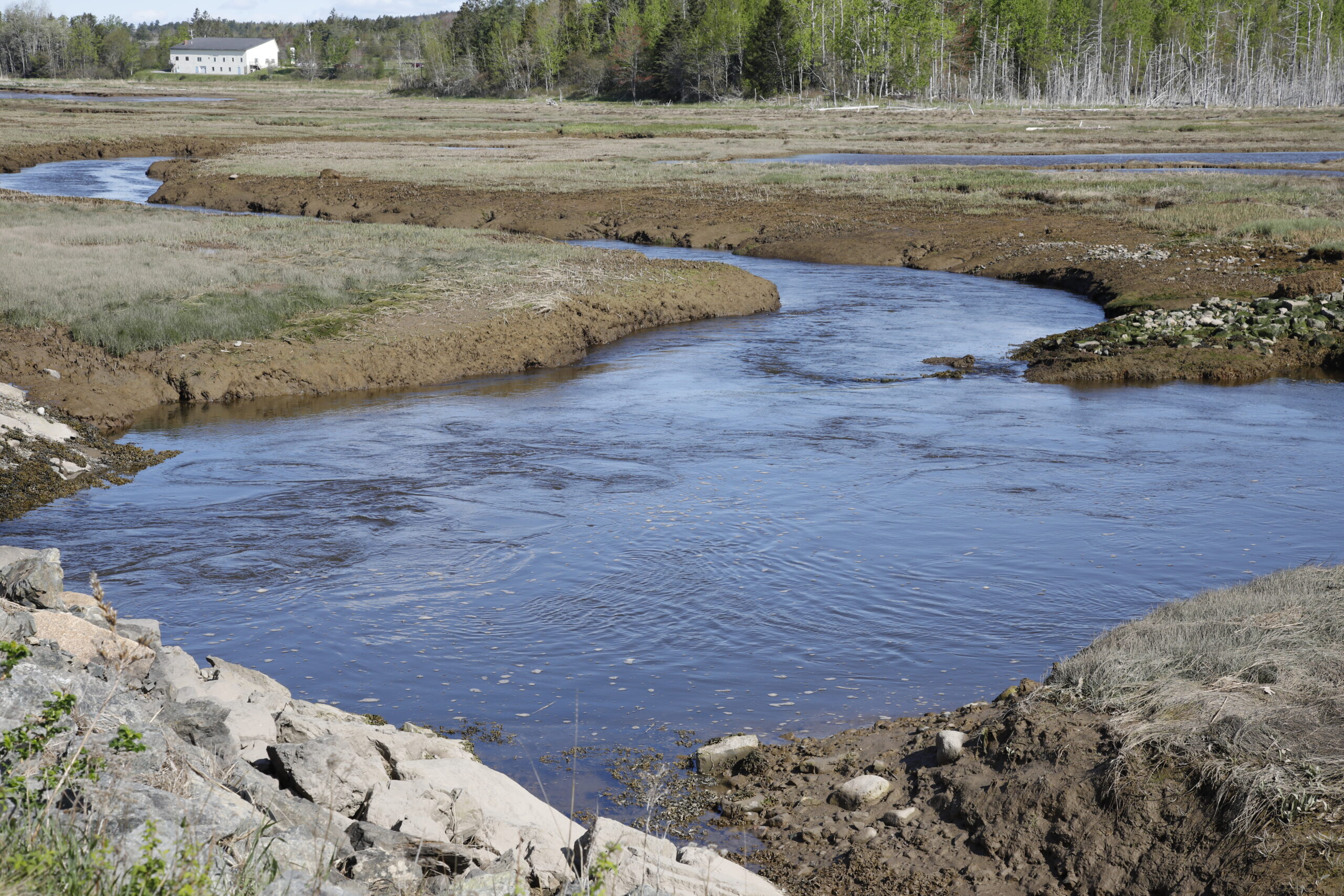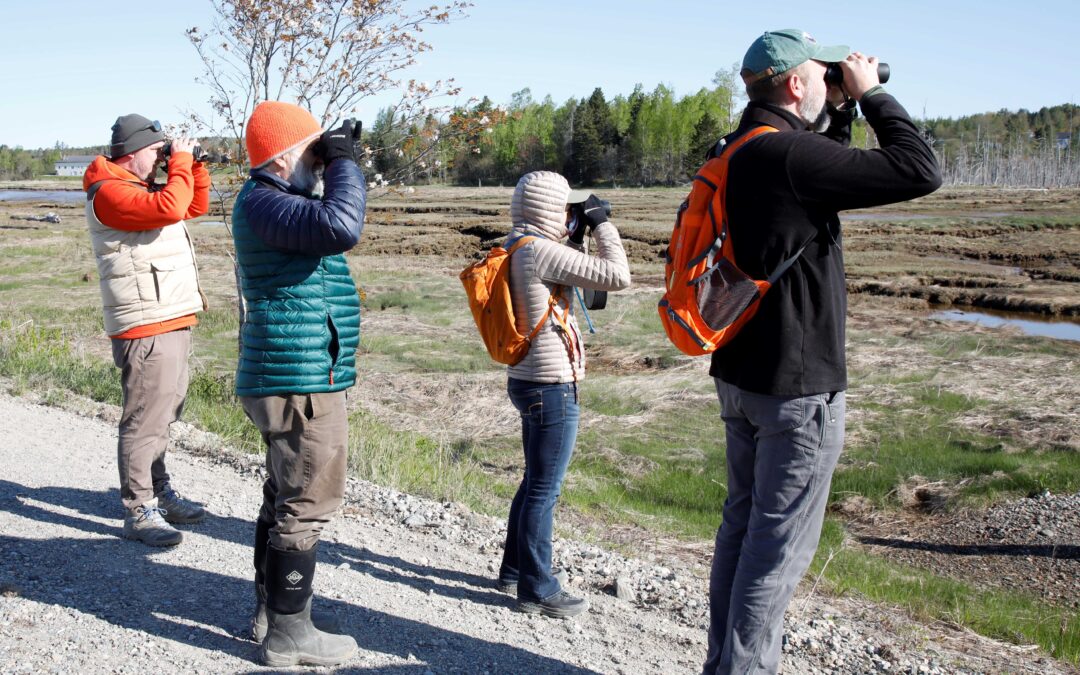An intrepid group of birders recently ventured into a cold spring wind on the Sunrise Trail in Machias. They were there not only to admire birds but also to contribute to research that is building baseline information about the organisms that call Schoppee Marsh home.
The Marsh that morning was alive with an exciting array of birds. Within a short interval, the group recorded diving ospreys, marauding eagles, savannah sparrows, tree swallows, yellow legs, Canada geese, black ducks, and one peregrine falcon!
The marshes in Machias Bay were once a major draw for our early Anglo American settlers in the 1760s. Hay from those marshes provided essential fodder for working livestock long before adequate pastureland had been cleared and planted. Later, diking and ditching of the Marsh and the Washington County railroad bed (Sunrise Trail) altered the flow of sediment and seawater essential to resupply nutrients to the saltmarsh grasses. Now much of Schoppee Marsh is eroding as those grasses decline in health.
The Downeast Salmon Federation is proposing to improve tidal flows and replenish lost soils in order to rejuvenate this critical plant community and improve the habitat for marsh-loving mammals, fish, crustaceans, and, yes, those birds that we admire so much.
“DCC is excited to offer citizen science opportunities that gather valuable baseline data and support our partner organizations like DSF.” Executive Director Colin Brown explains, “As we gain a more detailed understanding of what species are there and how they use the marsh, we can plan for more effective management and potential restoration projects.”


